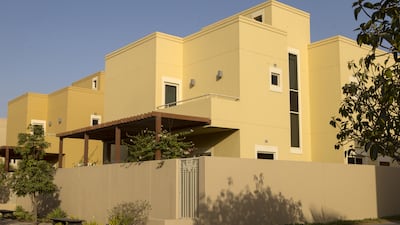Rental yields between properties in the UAE’s two major population centres are showing signs of converging, according to a new study.
A Reidin/Global Capital Partners (GCP) report argues that yields for villa properties have been moving closer together over the past four and-a-half years as prices have followed similar patterns in both cities.Between June 2012 and December 2016, it said villa prices have increased by 22 per cent in Dubai and 21 per cent in Abu Dhabi.
Moreover, although Abu Dhabi villas have previously enjoyed higher yields than Dubai – because it has more mid-market properties in its free zones, compared to a greater number of lower-yielding luxury villas in Dubai, says GCP managing director Sameer Lakhani – the gap between the two is shrinking.
Abu Dhabi villas currently enjoy gross yields of about 7 per cent, compared to 5.4 per cent in Dubai, the report said.
But over the period covered by the report, rents for Dubai villas increased by 11 per cent, compared to 8 per cent in Abu Dhabi.
“Yields between Dubai and Abu Dhabi are converging, price performance is virtually identical over four-and-a-half years,” Mr Lakhani said. “That’s not a coincidence. That is telling you that in the underlying economy there are structural, demographic shifts under way. People are living in one city and migrating to the other far more.”
He said that greater migration is leading to “arbitraging of rents [and] prices”.
“You are seeing that in demographic shifts. South Dubai is contiguous with North Abu Dhabi. And in these communities, the price differential is coming down.”
There is much greater divergence between the two cities in terms of apartment yields and pricing, however.
Dubai offers better yields, Mr Lakhani said, thanks to the much more abundant supply and the greater prevalence of budget properties.
Apartment prices climbed by 19 per cent between June 2012 and December 2016 in Abu Dhabi, but increased by 44 per cent over the same period in Dubai.
And gross rental yields – at 7.4 per cent in Dubai, compared to 6.8 per cent for Abu Dhabi – still outperformed.
Yet Mr Lakhani said that he also expects the two markets to more closely align over the longer term as more affordable units are built by the likes of Aldar in Abu Dhabi, where supply remains much tighter than Dubai.
Its figures show that 3,725 (65.5 per cent) of an expected 5,000 new homes were delivered in Abu Dhabi last year, compared to just under 13,000 (48 per cent) of an anticipated 27,000 in Dubai.
Mr Lakhani said delivery rates have been “systematically” lower than analysts’ forecasts in both cities, which he attributes both to developers deliberately slowing completions and to flaws in analyst estimates.
“Obviously, developers have become much more price-sensitive in this cycle, which means that as they see a slowdown they’re automatically rationing by supply,” he said.
But he added that a “systematic flaw in analysts’ estimates exists because there is not enough critical analysis that is done on developer estimates”.
Speaking ahead of next month’s Cityscape Abu Dhabi conference, which will be held from April 18-20, Craig Plumb of consultancy JLL said the property market is going through “a cycle”, but added that for those looking at longer- term investments the UAE offers a buying opportunity.
“As the UAE market grows and matures, the volatility of the sector will decline, making returns more stable and predictable, which in itself will attract more investors,” Mr Plumb said.
mfahy@thenational.ae
Follow The National's Business section on Twitter


